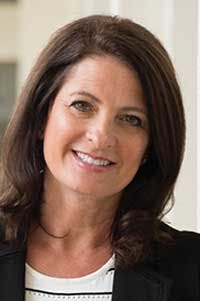At a Glance:
- An ally is a person who actively and intentionally seeks to bring about change by fostering inclusion, social justice and human rights.
- Panelists, Chandra Brown, CEO, MxD, and Jackie Mattox, president & CEO, Women in Electronics, shared perspectives gleaned from the collective knowledge they harness in leading their respective organizations.
- True allyship works to uplift others to combat systemic issues. This requires follow-through. Words without action can be perceived as disingenuous and performative.
Machine Design and Electronic Design hosted a WISE (Women in Science and Engineering) virtual panel to round out a year-long series of video chats on women’s participation across STEM fields. This session centered on the subject of allyship and the role of women-led organizations in elevating diversity across STEM disciplines.
Panelists Chandra Brown, CEO, MxD, and Jackie Mattox, president & CEO, Women in Electronics, each shared perspectives gleaned from the collective knowledge they harness in leading their respective organizations.
In this three-part Q&A that has been edited for length and clarity, Brown and Mattox agree that allyship can be an important tool in promoting equity and in supporting underrepresented groups. But to do so effectively, they argued, organizations, institutions and their senior members need to look inward to figure out the work that needs to be done.
Part 2: Becoming an Effective Ally
Rehana Begg: So, this is a triple barreled question: Who can be an ally? How does one become an ally? And what is woman-to-woman allyship?
Jackie Mattox: The reason this question resonates with me is that in our organization we’re actively trying to implement this type of strategy. We have an advisory council made up of the industry leaders—men and women—and they are coming together to help advance our mission. To me, that’s a form of allyship, by taking the leaders and having the leaders utilize their influence to promote change.
I will also have to say, along with all of these discussions comes grace and patience. Anytime we’re looking at systemic change, we want to develop relationships, we want to align, never divide. We always assume best intent. Once people get educated, they get on board. So, we always look at everything. We really need to offer the patience for the change to take place. Although, we have to move fast forward in the implementation. It’s a really tricky balance.
And as far as women supporting other women, or women being allies for other women, this is a major area that we can improve. Women, especially in male-dominated fields, need to be very supportive of other women, especially when they disagree…Women can be strong allies for other women, but I just don’t think we have enough education about how women can actively help other women.
For instance, what do you do when you disagree with another woman? How do you handle that? Because so much is linked to that and there’s a ripple effect when we don’t properly ally, or when we go against another woman. We don’t have to always agree, but it’s how we handle it that makes a difference for us all. So, I think that there’s multiple levels of this.
Chandra Brown: There were no women [where I started out], so if I didn’t have mentors and sponsors that were men, I probably wouldn’t be where I am today. First, we have to acknowledge that that’s important for a lot of folks, and that’s why I honestly advocate that everyone can be an ally. I mean, a man can be an ally for a woman, a white person can be an ally for a person of color. A cisgender/hetero person can be an ally for someone in LGBTQ. Let’s be clear, there are lots of marginalized groups out there. You can be an ally in many different ways.
And what I look for and what we’re talking about is that [an ally] is someone who is using their position, using their privilege—whether its credibility, whether experience, whether it’s from a leadership position—on how we are uplifting other groups and other people and other versions of what we believe and what we think. So, I think that’s a super-critical point.
And I agree with Jackie. We need to continue to educate on how we help women become better allies to other women. But I would argue, we can help everyone become better allies and whatever their area of strength and privileges. I didn’t like to tell people, “You too can be an ally.” In our organization, at MxD, I see a lot of [allyship] across the board and a lot of leading by example, such as who is on your board.
I’ll use a very specific example. If you go to our website, you can go look at our leadership team, you can look at our board of directors. And I have photos with each person; look at how many women are on that board. Go do the percentage—over half. Look at how many people of color are on there.
I really appreciate when people call [upon], for example, someone who’s maybe not speaking in the meeting. My male engineers, if you will, like helping pave the way for some of the other people in the meeting; they’re calling them out or letting them go first or answer the questions. Those are some of the specific examples I think of how I see it, too.
RB: It’s great that you use specific, granular examples. It brings me to a follow-up question on when allyship is more or less effective. It makes me think of performative allyship, for example, where what you’re doing might be perceived as disingenuous. Can we unpack that idea for a bit and talk about what performative allyship is? When is allyship not effective?
Jackie Mattox: We talk about authentic leadership. So, whoever you are or whatever your motives are, as long as you’re coming from authentic place, I think it’s going to have weight and merit. You can sniff that out very easily if you’re doing things for notoriety or whatever. We’ve seen that on social media. You see it with many organizations. I think it’s about getting yourself in check, and knowing why you’re doing things.
Having these conversations is very critical, because I think everybody makes mistakes, right? Education is powerful. That’s why I said we always approach these conversations with a lot of patience and grace because people make mistakes without really realizing what they’re doing. And then they find out and they go, “Oh, my goodness, I feel so bad about that.”
I agree with you that there are situations where it’s not necessarily authentic. But I think what we would focus on, where it is and what the best practices are and what we could do moving forward. We had a trainer, Jeff Henderson, on one of our leadership trainings. He always says, “Focus on what you’re for versus what you’re against, and you’re going to move forward much faster.” So, my viewpoint always is where can we focus towards making progress, instead of what are we against.
Chandra Brown: I agree. It’s hard to tell what’s performative or what’s just uneducated, or people who think they’re being a good ally and actually they’re not. But it’s not for a lack of trying. We know this happens all the time when some people will take advantage of using similar words or surface-level actions to benefit what happens.
It’s the same as Greenwashing, with the environmental movement and people using the words like “natural health.” This happens all the time in advertising and they’re not actually those things. Or breast cancer research and pink ribbons, and it turns out some things are carcinogens. Yes, there are very concrete examples where you know it’s performative.
It’s good to focus. That’s a small minority that do that. To me, one of the most important things is that it is words plus action. And it’s work. Most people I know that are great allies are not touting that. These are unsung heroes who, like great allies, are often the unsaid ones. It’s less about people taking credit. You can see all the work they’re doing behind the scenes, the hard work, the self-education, inward looking as we talked about, as well as outward. That’s how I think about the performative allyship question.
JM: And I really believe, even though we think of mentorship and sponsorship as relationship-driven, allyship is [relationship-driven] too. You have to approach all these conversations in alignment and unity, even if it’s people you disagree with, or even people that don’t have all the education yet.
It’s taken us some time but there were some people who weren’t on board with us when we were starting. But through education and conversations and a lot of desiring mutual understanding, a lot of patience, those situations have turned around. We have to be careful not to stump ourselves in our barriers. We have to keep pushing past and going where we want to go in alignment.
Even if we think we’re doing something for good but we’re actually causing division, it’s never good. It doesn’t matter what it is. Anytime we’re causing people to divide, it’s never right. So, we always take that standpoint. We’re going to align, we’re going to lock arms with our male counterparts, we’re going to see where we agree, and where we can move forward very productively. And that’s what we do and those become the major influencers.
The more you get people understanding, or they’re on the journey with you long enough, they see the change. With men, in particular, I believe a lot of them don’t understand until they get the education, but it’s also the profits. If you look at these conversations we’re having about diversity and inclusion, relative returns go up drastically. The more diverse teams you have, the more profits you will see in your organization.
So, this isn’t just a feel-good type of thing or “oh, it’s the right thing to do.” This is the economic thing to do. All the data supports that the more diverse you are in your corporate structure, the more inclusive you are, the more your relative returns go up. So just looking at the data and the returns is enough for a lot of people to start to pay attention.
Click here to register for the Engineering Change Through Allyship webinar with Chandra Brown and Jackie Mattox, to be held Nov. 30th.
Editor’s Note: Machine Design's Women in Science and Engineering (WISE) hub compiles our coverage of gender representation issues affecting the engineering field, in addition to contributions from equity seeking groups and subject matter experts within various subdisciplines. Click here for more.




